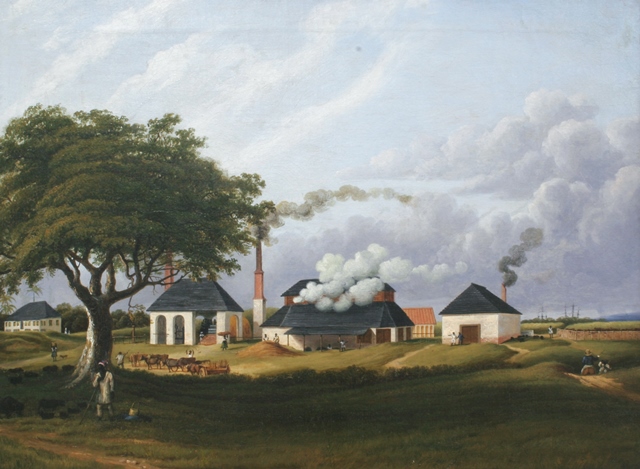This talk will now take place on Friday 25 May 2018, 6pm, Keynes Library, (please book your (free) places here)
Finola O’Kane Crimmin (UCD Dublin): Designed in Parallel or in Translation? Plantation Landscapes from Ireland, Jamaica and Georgia 1730-1830
Plantation design was translated from Ireland to the more distant colonies of the British empire over the course of the long eighteenth century. The Browne family of Westport, Co. Mayo, designed and managed their Jamaican plantations as absentee landlords, drawing on the skills and expertise of key employees such as George Hildebrand, land steward and agent for the Mayo estates and Alexander Bravo, manager of the Jamaican estates. They carried out many of the Brownes’ plans for improving their estates at home and abroad, while also enriching themselves. Hildebrand’s drawings of both the Irish and Jamaican estates conflated the representation of two very different places into one seamless tradition. Caribbean expertise was also imported by the Irishman Pierce Butler to manage his plantations in the sea islands of the state of Georgia. A commissioned officer at a young age, when military men acquired property they continued to use drawing as a tool for visualising, designing and managing their acquired territories. A drawing could represent a complex, messy, real place as an ideal, abstract and transnational space. The seemingly inevitable logic and inordinate success of plantation design, with its overtones both of the landed estate and the factory, derived from this ability to abstract a place into a space. This paper will triangulate between the landscapes of Mayo, Jamaica and Georgia to explore how European landscape design was translated into Caribbean and American plantations during the long eighteenth century. It will explore the use of drawing as a key method of communication between landlords and agents, Europe and the Americas.
Finola O’Kane is Associate Professor of Architecture at University College Dublin’s School of Architecture, Planning and Environmental Policy. Her books include the prizewinning Landscape Design in Eighteenth-century Ireland: Mixing Foreign Trees with the Natives (Cork, 2004) and Ireland and the Picturesque; Design, Landscape Painting and Tourism in Ireland 1700-1830 (Yale, 2013). She has also published widely on Georgian Dublin including the monograph William Ashford’s Mount Merrion; The Absent Point of View (Tralee, 2012), Irish urban history and Irish-owned Jamaican plantations. Appointed a fellow of Dumbarton Oaks in 2013, she embarked on her ongoing research project ‘Landscape and Revolution; Ireland, France and America 1770–1810’. In 2017 she was elected a member of the Royal Irish Academy.
This event is co-sponsored by the ASSC and the Eighteenth Century Reading Group




Leave a Reply